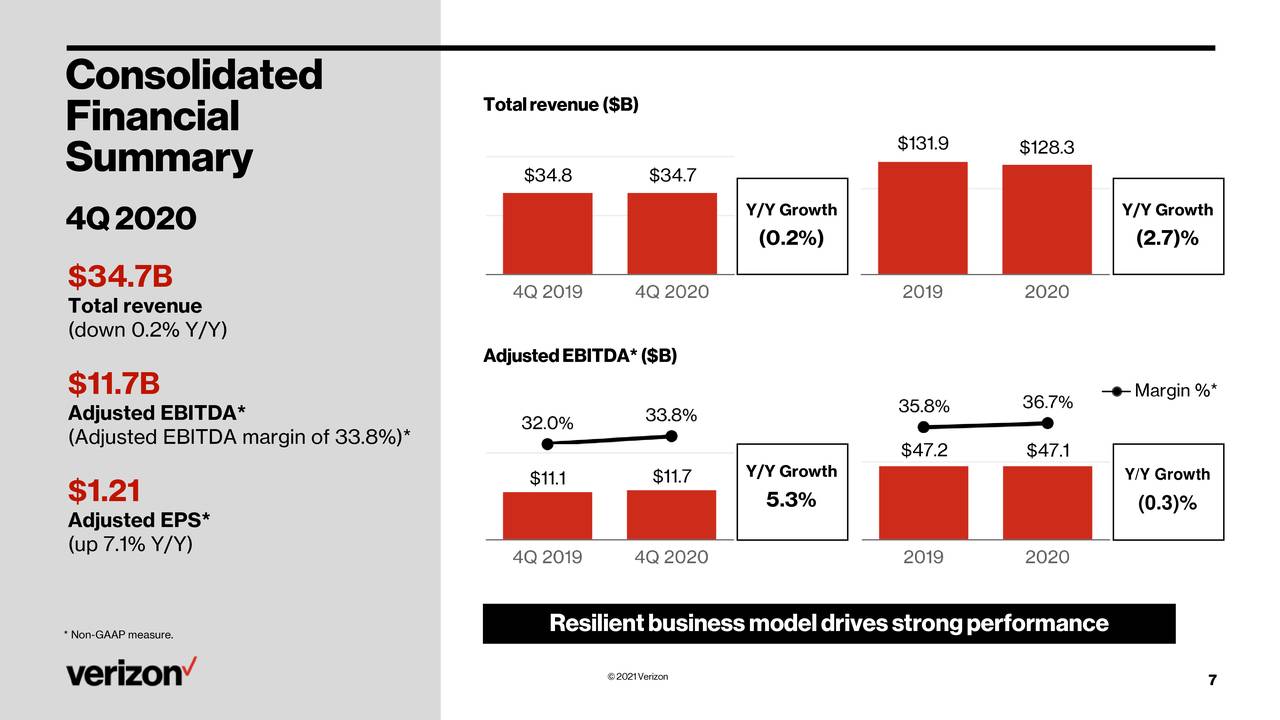5G expansion remains a priority for Verizon as it heads into 2021
Verizon’s fourth quarter saw adjusted earnings that beat analyst estimates, even as the carrier failed to meet revenue and postpaid wireless phone subscriber goals.
The first compatible iPhone was launched in the fourth quarter of 2020, and while it might be tempting to assume that this milestone would result in a boom in new and upgraded subscriptions, that wasn’t the case for Verizon. Verizon added just 279,000 postpaid phones this past quarter, which represents a 65% drop from last year. Further, its upgrade rate dropped to a new record low.
The carrier also lost a net 50,000 prepaid customers last quarter.
There is excitement around 5G, but the COVID-19 pandemic, and its resulting financial impact, continues to loom over consumers, making them more cautious spenders. In addition, those who are ready to get on the 5G bandwagon have a lot to consider, including which carrier is offering the best next-generation services, intensifying the competition between Verizon and the other major carriers.

Total operating revenue for Verizon fell 0.2% to $34.7 billion, compared with estimates of $34.43 billion, according to IBES data from Refinitiv.
Net income fell to $4.72 billion, or $1.11 per share, in the fourth quarter ended Dec. 31, from $5.22 billion, or $1.23 per share, a year earlier.
According to the earnings presentation, expanding 5G continues to be a priority for Verizon. Specifically, the carrier wants to add 14,000 5G Ultra Wideband (millimeter wave) sites, 20 5G Ultra Wideband cities and 10 5G public mobile edge computing (MEC) centers.

Due to the expended network expansions and upgrades, Verizon expects capital spending of $17.5 billion to $18.5 billion this year. This spending also includes making the wireless network more dense to manage future traffic demands and deploying more fiber infrastructure.
On an interesting note, Q4 represented the first time Verizon’s media unit experienced revenue growth since it bought Yahoo in 2017, which the company said can be attributed to strong advertising trends.
There also remains some investor unease around Verizon’s wireless spectrum holdings, particularly as the official C-Band auction results remain unknown. What is known, though, is that Verizon spent a lot of money, with some speculating it forked over more than $30 billion, creating some investor wariness, evident in the company’s Tuesday morning stock drop of 2.5%.
Despite disappointing revenue and subscriber results, Verizon’s earnings, as mentioned earlier, were strong and Chief Executive Hans Vestberg remained optimist, saying in a statement that 2020 for Verizon was “marked by transformational change, including the launch of our 5G nationwide network. We witnessed a mass shift toward virtual collaboration, touchless retail and delivery, remote work, distance learning, and telemedicine.”
The post Verizon misses Q4 subscriber goals, but beats earnings estimates appeared first on RCR Wireless News.
